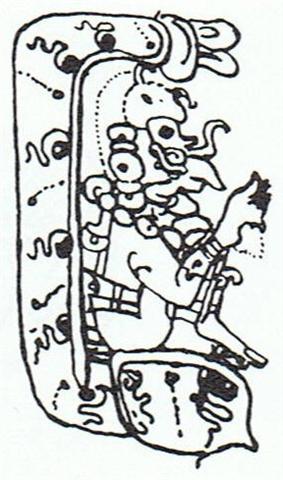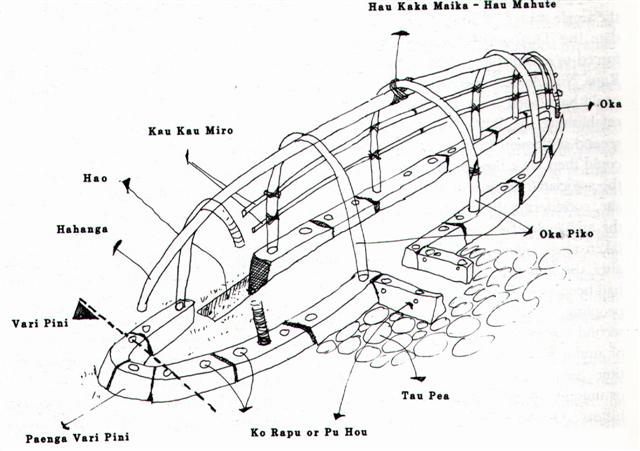7. In our hare paega model of time the 4
Bacabs evidently could be represented by the 4 holes in the
pair of
entrance stones:
Like in the Hawaiian calendar there are 4 special
'nights' at the beginning which lie 'at the doorstep to the island
proper'. Half of them are 'from the old homeland' and
half of them represent 'the sea voyage':
|
1 Hilo |
7 Ole-ku-kahi |
14
Akua |
21 Ole-ku-kahi |
26
Kane |
|
2
Hoaka |
8
Ole-ku-lua |
15 Hoku |
22 Ole-ku-lua |
27
Lono |
|
3
Ku-kahi |
9
Ole-ku-kolu |
16
Mahea-lani |
23 Ole-pau |
28
Mauli |
|
4
Ku-lua |
10 Ole-pau |
17 Kulu |
24 Kaloa-ku-kahi |
29
Muku |
|
5
Ku-kolu |
11
Huna |
18 Laau-ku-kahi |
25 Kaloa-ku-lua |
|
6
Ku-pau |
12
Mohalu |
19 Laau-ku-lua |
| |
13
Hua |
20 Laau-pau |
The kuhane stations are also beginning with 4
special ones, those around the great opening of Rano Kau:
|
Around
Rano Kau |
|
Te Pu Mahore |
Te Poko Uri |
|
Te Manavai |
Te
Kioe Uri |
|
Along the southern coast |
|
5 Te Piringa Aniva |
6 Te Pei |
7 Te Pou |
|
8 Hua Reva |
9 Akahanga |
|
10 Hatinga
Te Kohe |
11
Roto Iri Are |
|
12 Tama |
13 One Tea |
14 Hanga Takaure |
My red colour at 5 Te Piringa Aniva
should indicate Sun is being reborn here after a time when he has
not been seen - because he has been covered with a blanket of earth
('hilled up').
The last of the 'entrance stations' is
Te Kioe Uri which could be another name for Kuukuu. In
the Hawaiian calendar he could be Muku (Mutu):
|
Mutu 1. Cut short, shortened,
amputated; at an end, ceased; anything cut off short; short,
brief, quick (rare). Ua muku ko'u lole, my
dress is shortened. He kanaka wāwae muku, a person
with amputated foot. Huli muku a'ela nā wa'a, the
canoes turned sharply. (PPN mutu.) 2. A measure of
length from fingertips of one hand to the elbow of the other
arm, when both arms are extended to the side. 3. Broken
section of a wave or crest. See lala 1. 4. Same as
Mumuku, a wind. 5. Thirtieth night of the moon,
when it has entirely disappeared (muku). 6. Starboard
ends of 'iako (outrigger booms), hence starboard
sides of a canoe. |
We recognize his signs, 'amputated foot', 'entirely disappeared',
and 'canoe turned sharply'. Coming in through the entrance of the
hare paega the direction changes from straight ahead to a course
leading left. And then, of course, Sun will no longer be
visible, he has disappeared completely:

In Tahua the sign of amputation is used at
the top end of
the last of the 4 viri glyphs:

